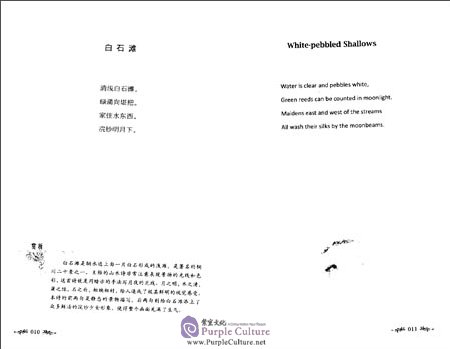
.jpg)

To support this point of view, such critics draw evidence from historical sources and Wang Wei’s own works to show that he was deeply influenced by Chan Buddhism and that he intentionally infused some Chan tenets into his pure nature poems but without making explicit reference to Buddhism. They furnish their own n.Wang Wei (701-761), often referred to as the “Buddha of Poetry,” has long been famous for his nature poems, which many modern and pre-modern critics believe were intended to imply some Chan Buddhist significance. Der ewige Spießer/The Eternal Philistine.The Art of Interpretation: “Lu zhai” or “Deer Park.He died on April 19, 1998, in Mexicoġ9 Ways of Looking at Wang Wei is published by Asphodel Press Paz received numerous awards for his work, including the Nobel He produced more than 30 books and poetry collections in his (1950) cemented his reputation as a master of language and a keen Poetry, such as Piedra de sol (1957), and critical and analytical works, such as El Laberinto de la soledad Of student demonstrations during the Olympic Games.Īdept at both poetry and prose, Paz moved back and forth between the two genres throughout his career. Paz resigned in protest over the Mexican government's handling He entered the diplomatic service in 1945 and was laterĪppointed the Mexican ambassador to India, a position he held from 1962 Paz was also a skilled editor and helped found a literary magazine called Taller The son and grandson of political journalists, he followed theįamily tradition and became a writer, publishing his first volume of Was exposed to literature at an early age thanks to his grandfather's Born on March 31, 1914, in Mexico City, Mexico. It is this combination that really gives life to these Their mastery of English prosody and verse. Type has its strengths-the scholars their grasp of classical Chinese, the poets This collection: those who are scholars and read Chinese and those who are For Weinberger there are two types of translators at work in Least one as inaccurate, and still another as a typical example of Chinoiserie. “improve” upon the original, others as “poetic”(meaning Westernized, ironic), at Including them in the collection, the editors criticize some as attempts to While praising all of the translations by The art of translation in general, an art the particulars of which are certain Of Chinese poetry, the strengths and weaknesses of the various renditions, and Weinberger’s and Paz’s engaging, often Talmudic remarks regarding the subtleties Time, with all the changes in poetic sensibility that that entails, but for Fletcher’s 1919 ‘The Form of the Deer’ andĮnding with Gary Snyder’s untitled version from 1978, this collection isĮxtraordinary, not only for its focus on the translation of a single poem over


 0 kommentar(er)
0 kommentar(er)
